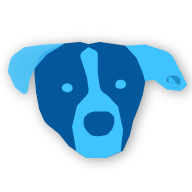Project Structure
The structure of a new Jaspr project.
Each Jaspr project is a normal Dart project including a pubspec.yaml file and lib/ directory.
Depending on your chosen Rendering Mode and Hydration settings, your Jaspr project will have a slightly different project structure.
Static/Server Mode with Automatic Hydration
├── lib/
│ ├── components/
│ │ ├── counter.dart
│ │ └── ...
│ ├── pages/
│ │ ├── home.dart
│ │ └── ...
│ ├── app.dart
│ ├── ...
│ ├── jaspr_options.dart
│ └── main.dart
├── web/
│ └── images/
│ └── ...
├── pubspec.lock
└── pubspec.yaml
-
The
libdirectory contains all your usual dart code, including components, pages, routes etc. depending on your architecture. -
The
lib/main.dartfile is the entry point for your server application. It callsrunApp()and provides your root document component.Any component annotated with
@clientthat is built during pre-rendering will automatically be hydrated on the client. -
The optional
lib/jaspr_options.dartis auto-generated by Jasprs tooling. It exposes a top-leveldefaultJasprOptionsthat you should provide to theJaspr.initializeApp(options: ...)call insidelib/main.dart. -
The
webdirectory contains any static assets you want to access from your website, like images or fonts. Files inside this directory are later accessible through their relative url, e.g.<domain>/images/logo.png.
Static/Server Mode with Manual Hydration
├── lib/
│ ├── components/
│ │ ├── counter.dart
│ │ └── ...
│ ├── pages/
│ │ ├── home.dart
│ │ └── ...
│ ├── app.dart
│ ├── ...
│ └── main.dart
├── web/
│ ├── images/
│ │ └── ...
│ └── main.dart
├── pubspec.lock
└── pubspec.yaml
-
The
libdirectory contains all your usual dart code, including components, pages, routes etc. depending on your architecture. -
The
lib/main.dartfile is the server entry point for your application. It callsrunApp()and provides your root document component. -
The
webdirectory contains any static assets you want to access from your website, like images or fonts. Files inside this directory are later accessible through their relative url, e.g.<domain>/images/logo.png.Additionally, any
.dartfile in here will be compiled to js and accessible through<domain>/<filename>.dart.js. -
The
web/main.dartfile is the client entry point for your application. It callsrunApp()and provides the main app component, hydrating the pre-rendered html created by the server.
Client Mode
├── lib/
│ ├── components/
│ │ ├── counter.dart
│ │ └── ...
│ ├── pages/
│ │ ├── home.dart
│ │ └── ...
│ └── app.dart
├── web/
│ ├── images/
│ │ └── ...
│ ├── index.html
│ ├── styles.css
│ └── main.dart
├── pubspec.lock
└── pubspec.yaml
-
The
libdirectory contains all your usual dart code, including components, pages, routes etc. depending on your architecture. -
The
webdirectory contains any static assets you want to access from your website, like images or fonts. Files inside this directory are later accessible through their relative url, e.g.<domain>/images/logo.png.Additionally, any
.dartfiles in here will be compiled to js and accessible through<domain>/<filename>.dart.js. -
The
web/index.htmlfile (along with other html and css files) contains the static markup and styling for your website. -
The
web/main.dartfile is the entry point for your application. It callsrunApp()and provides the main app component.
